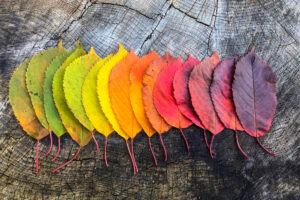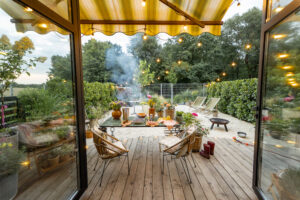Maintaining a lush, green lawn in shaded areas can be challenging. Many grass types require ample sunlight to thrive, but there are several shade-tolerant varieties that can grow well in low-light conditions. This article explores the best options for shade-tolerant grasses, helping you achieve a beautiful lawn even in shaded areas.
Understanding Shade-Tolerant Grasses
Shade-tolerant grasses are varieties that can grow and remain healthy with limited sunlight. They are specially adapted to thrive in conditions where direct sunlight is scarce, making them ideal for lawns with partial or full shade.
Best Shade-Tolerant Grasses
-
Fine Fescue: Fine fescues, including creeping red fescue, hard fescue, and sheep fescue, are among the best grasses for shaded areas. They are drought-tolerant, low-maintenance, and can thrive in poor soil conditions. Fine fescues are known for their fine texture and ability to stay green with minimal sunlight.
-
Tall Fescue: Tall fescue is another excellent choice for shaded lawns. It has a deep root system that makes it drought-resistant and capable of thriving in low-light conditions. Tall fescue is also resistant to wear and tear, making it suitable for high-traffic areas.
-
Zoysia Grass: Zoysia grass is a warm-season grass that tolerates moderate shade. It has a dense growth habit that helps crowd out weeds and requires less mowing than other grass types. Zoysia is also drought-tolerant and can withstand heavy foot traffic.
-
St. Augustine Grass: St. Augustine grass is known for its excellent shade tolerance. It thrives in warm climates and is well-suited for coastal areas. St. Augustine grass has a thick, coarse texture and can handle partial shade, making it a popular choice for shaded lawns in southern regions.
-
Ryegrass: Perennial ryegrass can tolerate light to moderate shade and is often used in seed blends for shaded areas. It establishes quickly and provides a green, lush lawn even with limited sunlight. Ryegrass is also known for its fine texture and durability.
Tips for Growing Shade-Tolerant Grasses
-
Soil Preparation: Ensure that the soil is well-draining and rich in organic matter. Amend the soil with compost or peat moss to improve its texture and nutrient content.
-
Proper Watering: Shade-tolerant grasses typically require less water than sun-loving varieties. Water deeply and infrequently to encourage deep root growth and reduce the risk of fungal diseases.
-
Mowing Practices: Mow shade-tolerant grasses at a higher height to allow for more leaf surface, which enhances photosynthesis in low-light conditions. Avoid cutting more than one-third of the grass blade at a time.
-
Fertilization: Use a balanced fertilizer to provide essential nutrients. Be cautious with nitrogen-heavy fertilizers, as excessive nitrogen can promote disease in shaded areas.
-
Aeration: Aerate the soil regularly to improve air circulation and reduce compaction. This helps the grass roots access oxygen and nutrients more effectively.
-
Pest and Disease Management: Monitor for pests and diseases, which can be more prevalent in shaded areas. Use appropriate treatments as needed to maintain lawn health.
FAQs About Shade-Tolerant Grasses
1. What is the best grass for shaded areas?
Fine fescues and tall fescue are among the best grasses for shaded areas due to their high shade tolerance and low-maintenance requirements. St. Augustine grass is also an excellent choice for warm climates.
2. Can any grass grow in full shade?
While no grass will thrive in full shade with no sunlight, fine fescues and St. Augustine grass can tolerate low-light conditions better than most other grasses. Consider combining these with ground covers or shade-loving plants in areas with very limited sunlight.
3. How do I maintain a shaded lawn?
Maintaining a shaded lawn involves proper soil preparation, watering, mowing, fertilization, and aeration. Choose shade-tolerant grass varieties and follow best practices to ensure healthy growth. Regularly monitor for pests and diseases and address any issues promptly.
4. Can I mix shade-tolerant grasses with other grass types?
Yes, mixing shade-tolerant grasses with other grass types can create a more resilient lawn. Seed blends often combine shade-tolerant and sun-loving varieties to provide coverage for both shaded and sunny areas.
Conclusion
Creating a lush, green lawn in shaded areas is achievable with the right shade-tolerant grass varieties. Fine fescue, tall fescue, zoysia grass, St. Augustine grass, and perennial ryegrass are excellent options for low-light lawns. By following proper soil preparation, watering, mowing, fertilization, and aeration practices, you can maintain a healthy, vibrant lawn even in shaded areas. With these tips and grass choices, you can enjoy a beautiful lawn regardless of the amount of sunlight your yard receives.








Reader Interactions